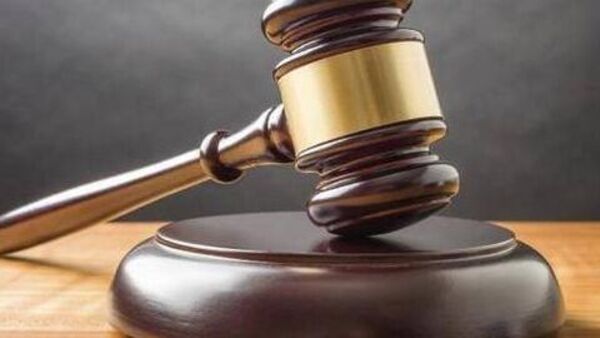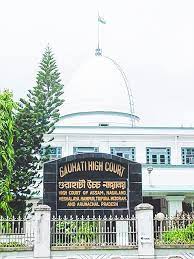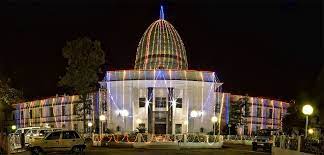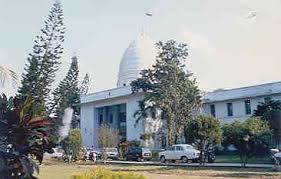On 5 August 2019, the President issued CO 272, the Constitution (Application to Jammu and Kashmir) Order 2019. By the CO, the President in exercise of powers under Article 370(1), applied: (Para 7)
a. All the provisions of the Constitution of India by superseding all previous Constitution Orders by which select provisions of the Constitution were made applicable to Jammu and Kashmir either with or without modifications; and
b. Article 367(4) in which a modification was made, changing the term “Constituent Assembly” in the proviso to Article 370(3) to “Legislative Assembly.” (Para 7)
On 5 August 2019, Parliament undertook the following exercise in its capacity as the legislature of the State, since the Proclamation under Article 356 was subsisting:
a. The Rajya Sabha recommended to the President under Article 370(3) that all clauses of Article 370 shall cease to operate:
“That this House recommends the following public notification to be issued by the President of India under Article 370 (3):’
In exercise of the powers conferred by Clause (3) of article 370 read with clause (1) of article 370 of the Constitution of India, the President, on the recommendation of the Parliament, is pleased to declare that, as from [*date*], all clauses of the said article 370 shall cease to be operative except clause (1) thereof which shall read as under, namely:
“All provisions of this Constitution, as amended from time to time, without any modifications or exceptions, shall apply to the State of Jammu and Kashmir notwithstanding anything contrary contained in article 152 or article 308 or any other article of this Constitution or any other provision of the Constitution of Jammu and Kashmir or any law, document, judgement, ordinance, order, bye-law, rule, regulation; notification, custom or usage having the force of law in the territory of India, or any other instrument, treaty or agreement as envisaged under article 363 or otherwise.”
b. Simultaneously, the Rajya Sabha expressed its views on the Jammu and Kashmir Reorganisation Bill 2019[Reorganisation Bill] which was sent to the House under the proviso to Article 3, in the following terms :
“That the President of India has referred the Jammu and Kashmir Reorganisation Bill, 2019 to this House under the proviso to article 3 of the Constitution of India for its views as this House is vested with the powers of the State Legislature of Jammu and Kashmir, as per proclamation of the President of India dated 19 December, 2018. This House resolves to express the view to accept the Jammu and Kashmir Reorganisation Bill, 2019.”
c. Simultaneously, the Lok Sabha also accepted the Jammu and Kashmir Reorganisation Bill 2019 in terms of the following resolution:
“That the President of India has referred the Jammu and Kashmir Reorganisation Bill, 2019 to this House under the proviso to article 3 of the Constitution of India for its views as this House is vested with the powers of the State Legislature of Jammu and Kashmir, as per proclamation of the President of India dated 19 December, 2018. This House resolves to express the view to accept the Jammu and Kashmir Reorganisation Bill 2019”
d. The Rajya Sabha passed the Jammu and Kashmir Reorganisation Act 2019[Reorganisation Act]. (Para 8)
When a batch of petitions challenging the constitutional validity of CO 272 and CO 273 came before a Constitution Bench, the petitioners sought a reference to a larger bench. The submission was that in Prem Nath Kaul v. State of Jammu & Kashmir, [1959 Suppl (2) SCR 270] a Constitution Bench had held that Article 370 was temporary in nature. According to counsel, subsequently in Sampat Prakash v. State of Jammu & Kashmir, [(1969) 2 SCR 365] another Constitution Bench held (without considering the earlier decision in Prem Nath Kaul (supra)) that Article 370 is not a temporary provision because:
a. Neither the Constituent Assembly of Jammu and Kashmir nor the President had ever made a declaration that Article 370 ceased to be operative; and
b. In view of the proviso to Article 368 as it applied to Jammu and Kashmir, the President is required to exercise powers from time to time under Article 370 to bring into effect constitutional amendments made under Article 368 in the State of Jammu and Kashmir. (Para 14)
The issue that arises for consideration is whether the procedure which was followed in passing the Reorganisation Bill 2019 is valid. That is, could Parliament have substituted its own views for the views of the State legislature as required under the proviso to Article 3 in view of the power conferred upon it by the Proclamation issued under Article 356? (Para 508)
Applying the standard laid above to test the exercise of power after a Proclamation under Article 356 is issued, the petitioners must first prove that the exercise of power was mala fide. We have in the preceding section of this judgment held that the scope of the powers of Parliament under Article 356(1)(b) cannot be restricted to only law-making powers of the Legislature of the State. Thus, the exercise of power cannot be held mala fide merely because it is a non-law making power or that it furthers an important federal principle. (Para 509)
Once this court has come to the conclusion that CO 272 is valid, all the provisions of the Constitution of India apply to the State of Jammu and Kashmir. The exceptions and modifications to the provisions of the Constitution in its application to Jammu and Kashmir ceased to exist. CO 272 was issued by the President on 5 August 2019. On the same day, the Reorganization Bill was sent to the Rajya Sabha and Lok Sabha for securing their views under the first proviso to Article 3 and the Rajya Sabha passed the Reorganization Act. The next day, the Lok Sabha passed the Reorganization Act. Thus, when the Reorganisation Bill was introduced, that is 5 August 2019, the second proviso to Article 3 as it applied to the State of Jammu and Kashmir ceased to exist because of CO 272. Thus, the issue of whether the second proviso to Article 3 could have been suspended in exercise of the power under Article 356(1)(c) no longer survives. (Para 513)
In view of the above discussion, the following are the conclusions:
a. The State of Jammu and Kashmir does not retain any element of sovereignty after the execution of the IoA and the issuance of the Proclamation dated 25 November 1949 by which the Constitution of India was adopted. The State of Jammu and Kashmir does not have ‘internal sovereignty’ which is distinguishable from the powers and privileges enjoyed by other States in the country. Article 370 was a feature of asymmetric federalism and not sovereignty;
b. The petitioners did not challenge the issuance of the Proclamations under Section 92 of the Jammu and Kashmir Constitution and Article 356 of the Indian Constitution until the special status of Jammu and Kashmir was abrogated. The challenge to the Proclamations does not merit adjudication because the principal challenge is to the actions which were taken after the Proclamation was issued;
c. The exercise of power by the President after the Proclamation under Article 356 is issued is subject to judicial review. The exercise of power by the President must have a reasonable nexus with the object of the Proclamation. The person challenging the exercise of power must prima facie establish that it is a mala fide or extraneous exercise of power. Once a prima facie case is made, the onus shifts to the Union to justify the exercise of such power;
d. The power of Parliament under Article 356(1)(b) to exercise the powers of the Legislature of the State cannot be restricted to law-making power thereby excluding non-law making power of the Legislature of the State. Such an interpretation would amount to reading in a limitation into the provision contrary to the text of the Article;
e. It can be garnered from the historical context for the inclusion of Article 370 and the placement of Article 370 in Part XXI of the Constitution that it is a temporary provision;
f. The power under Article 370(3) did not cease to exist upon the dissolution of the Constituent Assembly of Jammu and Kashmir. When the Constituent Assembly was dissolved, only the transitional power recognised in the proviso to Article 370(3) which empowered the Constituent Assembly to make its recommendations ceased to exist. It did not affect the power held by the President under Article 370(3);
g. Article 370 cannot be amended by exercise of power under Article 370(1)(d). Recourse must have been taken to the procedure contemplated by Article 370(3) if Article 370 is to cease to operate or is to be amended or modified in its application to the State of Jammu and Kashmir. Paragraph 2 of CO 272 by which Article 370 was amended through Article 367 is ultra vires Article 370(1)(d) because it modifies Article 370, in effect, without following the procedure prescribed to modify Article 370. An interpretation clause cannot be used to bypass the procedure laid down for amendment;
h. The exercise of power by the President under Article 370(1)(d) to issue CO 272 is not mala fide. The President in exercise of power under Article 370(3) can unilaterally issue a notification that Article 370 ceases to exist. The President did not have to secure the concurrence of the Government of the State or Union Government acting on behalf of the State Government under the second proviso to Article 370(1)(d) while applying all the provisions of the Constitution to Jammu and Kashmir because such an exercise of power has the same effect as an exercise of power under Article 370(3) for which the concurrence or collaboration with the State Government was not required;
i. Paragraph 2 of CO 272 issued by the President in exercise of power under Article 370(1)(d) applying all the provisions of the Constitution of India to the State of Jammu and Kashmir is valid. Such an exercise of power is not mala fide merely because all the provisions were applied together without following a piece-meal approach;
j. The President had the power to issue a notification declaring that Article 370(3) ceases to operate without the recommendation of the Constituent Assembly. The continuous exercise of power under Article 370(1) by the President indicates that the gradual process of constitutional integration was ongoing. The declaration issued by the President under Article 370(3) is a culmination of the process of integration and as such is a valid exercise of power. Thus, CO 273 is valid;
k. The Constitution of India is a complete code for constitutional governance. Following the application of the Constitution of India in its entirety to the State of Jammu and Kashmir by CO 273, the Constitution of the State of Jammu and Kashmir is inoperative and is declared to have become redundant;
l. The views of the Legislature of the State under the first proviso to Article 3 are recommendatory. Thus, Parliament’s exercise of power under the first proviso to Article 3 under the Proclamation was valid and not mala fide;
m. The Solicitor General stated that the statehood of Jammu and Kashmir will be restored (except for the carving out of the Union Territory of Ladakh). In view of the statement we do not find it necessary to determine whether the reorganisation of the State of Jammu and Kashmir into two Union Territories of Ladakh and Jammu and Kashmir is permissible under Article 3. However, we uphold the validity of the decision to carve out the Union Territory of Ladakh in view of Article 3(a) read with Explanation I which permits forming a Union Territory by separation of a territory from any State; and
n. We direct that steps shall be taken by the Election Commission of India to conduct elections to the Legislative Assembly of Jammu and Kashmir constituted under Section 14 of the Reorganisation Act by 30 September 2024. Restoration of statehood shall take place at the earliest and as soon as possible. (Para 514)
The second round of insurgency holds its origin to the latter part of 1980s. There was a troubled situation at the ground level, which was apparently not redressed. It culminated in the migration of one part of the population of the State 1989-90. It is something that our country has had to live with and without any redressal for the people who had to leave their home and hearth. It was not a voluntary migration. (Sanjay Kishan Kaul, J. -Para 113)
Both judgments are in seriatim and uniformly agree that Article 370 of the Constitution of India was a feature of asymmetric federalism and not sovereignty. Article 370 was enacted as a transitional provision and did not have permanent character. The abrogation of Article 370 does not negate the federal structure, as the citizens living in Jammu and Kashmir do and will enjoy same status and rights as given to citizens residing in other parts of the country. (Sanjiv Khanna, J. – Para 2)
SUPREME COURT OF INDIA
2023 STPL(Web) 470 SC
[2023 INSC 1058]
In Re: Article 370 Of The Constitution
Writ Petition (Civil) No. 1099 of 2019 With Writ Petition (C) No. 871 of 2015 With Writ Petition (C) No. 722 of 2014 With SLP (C) No. 19618 of 2017 With Writ Petition (C) No. 1013 of 2019 With Writ Petition (C) No. 1082 of 2019 With Writ Petition (C) No. 1068 of 2019 With Writ Petition (C) No. 1037 of 2019 With Writ Petition (C) No. 1062 of 2019 With Writ Petition (C) No. 1070 of 2019 With Writ Petition (C) No. 1104 of 2019 With Writ Petition (C) No. 1165 of 2019 With Writ Petition (C) No. 1210 of 2019 With Writ Petition (C) No. 1222 of 2019 With Writ Petition (C) No. 396 of 2017 With Writ Petition (C) No. 756 of 2017 With Writ Petition (C) No. 398 of 2018 With Writ Petition (C) No. 924 of 2018 With Writ Petition (C) No. 1092 of 2018 With Writ Petition (C) No. 1162 of 2018 With Writ Petition (C) No. 1048 of 2019 With Writ Petition (C) No. 1268 of 2019 And With Writ Petition (C) No. 1368 of 2019-Decided on 11-12-2023
https://stpllaw.in/wp-content/uploads/2024/01/2023-STPLWeb-470-SC.pdf







